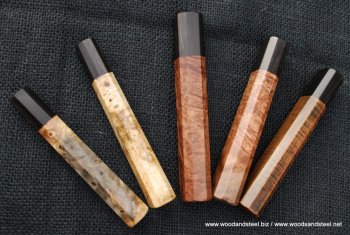Mike Martinez
Well-Known Member
I've been contacted by a few folks regarding a Wa handle tutorial (octagon shape) so I've decided to finish up one that I started a while ago. If any of you who would benefit from this tutorial have specific questions, please address me by PM or by posting here so that I make sure to include said information in the tutorial. I'll make sure to highlight every step and make it picture heavy so feel free to ask questions. The tutorial will be posted on my blog, to which there is a link in my signature line. Thank you all.
-Mike
-Mike


